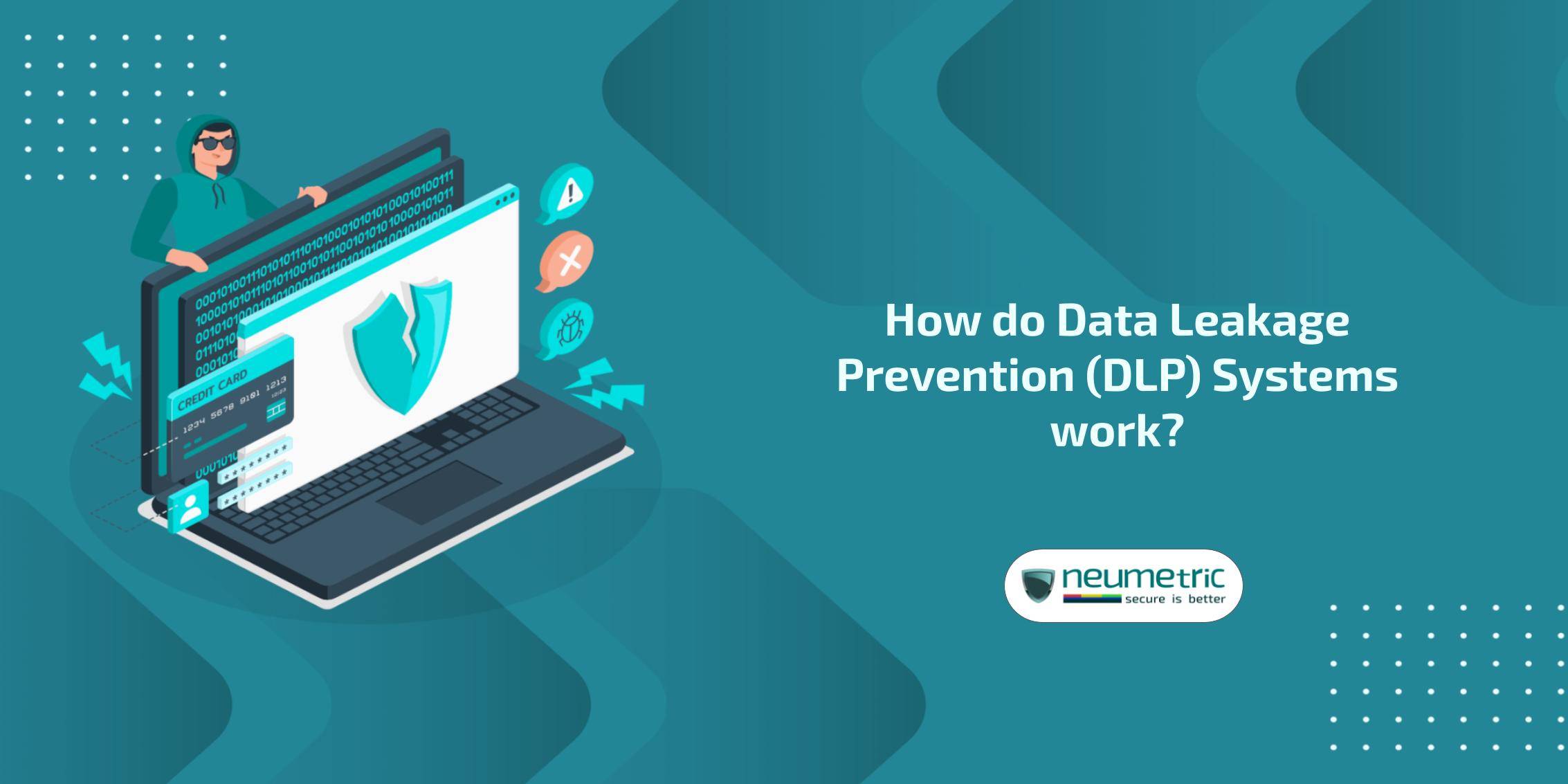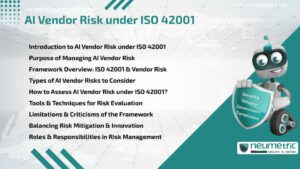Table of Contents
ToggleHow do Data Leakage Prevention [DLP] Systems work?
Introduction
In today’s digital age, protecting sensitive data has become more critical than ever. From personal information to corporate secrets, the risk of data leakage looms large, with potential consequences ranging from financial loss to reputational damage. This journal aims to delve deep into the realm of Data Leakage Prevention [DLP] Systems, shedding light on their inner workings & how they safeguard against data breaches.
Understanding Data Leakage
Before diving into the intricacies of DLP Systems, it’s essential to grasp the concept of data leakage. Data leakage occurs when sensitive information is unintentionally or maliciously exposed to unauthorized individuals or entities. This could result from various factors, including human error, insider threats or cyberattacks.
The Role of Data Leakage Prevention [DLP] Systems
DLP Systems serve as guardians of data integrity, aiming to prevent unauthorized disclosure or exfiltration of sensitive information. By employing a combination of technologies & policies, these systems act as proactive measures against data leakage incidents.
How DLP Systems Work
Data Leakage Prevention [DLP] Systems employ a multi-faceted approach to safeguard sensitive data. Here’s a breakdown of their inner workings:
- Data Discovery & Classification: Before data can be protected, it must first be identified & classified. DLP Systems utilize sophisticated algorithms to scan & analyze data across various endpoints, networks & cloud repositories. Through this process, sensitive information such as personal identifiable information [PII], financial records or intellectual property [IP] is tagged & categorized. This classification forms the foundation for applying appropriate security controls & enforcement policies.
- Policy Creation & Enforcement: Once sensitive data is identified, organizations establish policies dictating how it should be handled & accessed. DLP Systems play a crucial role in enforcing these policies by implementing granular controls & monitoring mechanisms. This ensures that data is only accessed & shared according to predefined rules & regulations. Policies may include restrictions on data access based on user roles, encryption requirements for data in transit & prohibitions on sharing sensitive information outside authorized channels.
- Monitoring & Detection: Continuous monitoring is essential for detecting anomalous behavior or potential data leakage incidents. DLP Systems employ real-time monitoring tools that analyze network traffic, endpoint activities & user behavior patterns. By scrutinizing data interactions against predefined rulesets, these systems can swiftly identify suspicious activities & trigger alerts for further investigation. Advanced analytics & machine learning algorithms enhance detection capabilities, enabling proactive identification of emerging threats & trends.
- Incident Response & Remediation: In the event of a data leakage incident, swift action is paramount to mitigate the damage. DLP Systems streamline incident response procedures by providing automated response capabilities & predefined remediation workflows. This enables organizations to contain the breach, assess the extent of the damage & enact appropriate countermeasures to prevent recurrence. Incident response plans may include isolating compromised systems, revoking access credentials & initiating forensic investigations to determine the root cause of the breach.
- Integration with Security Ecosystem: DLP Systems often integrate seamlessly with existing security infrastructure, including firewalls, intrusion detection systems [IDS] & security information & event management [SIEM] platforms. This interoperability enhances the overall security posture by providing a holistic view of the organization’s data landscape & enabling coordinated responses to emerging threats. Integration with SIEM platforms facilitates centralized log management & correlation of security events, enabling rapid threat detection & response across the enterprise.
- User Education & Awareness: While technology plays a significant role in data protection, human factors cannot be overlooked. DLP Systems incorporate user education & awareness programs to foster a culture of data security within the organization. By imparting knowledge about data handling best practices & the importance of compliance, employees become active participants in safeguarding sensitive information. Training modules may cover topics such as recognising phishing attempts, securely handling confidential data & reporting security incidents promptly.
- Continuous Monitoring & Optimization: The threat landscape is constantly evolving, necessitating ongoing monitoring & optimisation of DLP Systems. Regular audits, assessments & updates ensure that the system remains effective against emerging threats & regulatory requirements. Continuous monitoring capabilities enable organizations to adapt to changing risk profiles & security trends, ensuring that DLP policies & controls remain aligned with business objectives & compliance mandates.
- Scalability & Flexibility: As organizations grow & evolve, so do their data protection needs. DLP Systems offer scalability & flexibility to adapt to changing business requirements & technological advancements. Whether expanding into new markets, adopting cloud services or implementing BYOD policies, these systems can scale to accommodate evolving landscapes. Scalable architectures & flexible deployment options enable organizations to tailor DLP solutions to their specific needs while maintaining consistent levels of protection across diverse environments.
- Regulatory Compliance: Compliance with data protection regulations is a top priority for organizations across industries. DLP Systems aid in regulatory compliance by providing mechanisms for enforcing data protection laws such as General Data Protection Regulation [GDPR], Health Insurance Portability and Accountability Act [HIPAA] or Payment Card Industry Data Security Standard [PCI DSS]. By aligning with regulatory requirements, organizations can avoid hefty fines & legal repercussions associated with non-compliance. DLP solutions offer features such as data encryption, access controls & audit trails to demonstrate adherence to regulatory mandates & industry standards.
- Cost-Effectiveness & ROI: While the initial investment in DLP Systems may seem significant, the long-term benefits far outweigh the costs. By mitigating the risk of data breaches & minimizing the associated damages, organizations can realize substantial cost savings & achieve a positive return on investment [ROI] over time. Cost-effective deployment models, such as cloud-based DLP solutions & managed services, offer flexible pricing options & lower total cost of ownership [TCO] compared to traditional on-premises deployments. Additionally, quantifying the financial impact of data protection measures, such as reduced regulatory penalties & litigation expenses, demonstrates the tangible value of investing in DLP technologies.
Challenges & Limitations
Despite their effectiveness, DLP Systems are not without challenges & limitations. Common hurdles include:
- False Positives & Negatives: Overly aggressive DLP policies can result in false positives, triggering unnecessary alerts & disrupting legitimate business activities. Conversely, false negatives may occur when DLP Systems fail to detect actual data leakage incidents, leaving organizations vulnerable to exploitation. Striking the right balance between sensitivity & specificity is crucial for minimizing false alerts while maximizing threat detection capabilities. Continuous refinement of detection algorithms & tuning of policy rules can help mitigate the impact of false positives & negatives, ensuring that DLP systems remain effective without impeding productivity.
- Complexity & Overhead: Implementing & managing DLP Systems can be complex & resource-intensive, requiring dedicated personnel & technical expertise. Additionally, the overhead associated with data monitoring & analysis may impact system performance & productivity. Complex deployment architectures, disparate data sources & evolving threat landscapes contribute to the overall complexity of DLP implementations. Adequate resource allocation, training & support are essential for overcoming these challenges & optimizing the operational efficiency of DLP Systems. Leveraging automation & orchestration capabilities can also streamline routine tasks & reduce manual intervention, thereby alleviating the burden on IT staff & improving scalability.
- Data Privacy Concerns: While the primary goal of DLP Systems is to protect sensitive data, concerns may arise regarding user privacy & surveillance. Balancing the need for data security with respect for individual privacy rights is a delicate task that organizations must navigate carefully. Transparent communication, privacy impact assessments & data minimisation strategies are essential for building trust & maintaining compliance with privacy regulations such as GDPR & CCPA. Implementing privacy-enhancing technologies, such as anonymisation & pseudonymisation, can further mitigate privacy risks while preserving the effectiveness of DLP measures.
- Evading Detection: Sophisticated adversaries may employ various techniques to evade detection by DLP Systems, such as encryption, obfuscation or data exfiltration methods. Staying ahead of evolving threats requires continuous innovation & adaptation on the part of security professionals. Advanced threat intelligence, threat hunting capabilities & collaborative information sharing forums enable organizations to proactively identify & mitigate emerging threats before they escalate into full-blown breaches. Continuous monitoring & behavioral analytics can also help detect subtle anomalies indicative of malicious activity, enhancing the overall resilience of DLP defenses against sophisticated adversaries.
- Integration Challenges: Integrating DLP Systems with existing IT infrastructure & business processes can pose challenges, particularly in heterogeneous environments with diverse technology stacks. Interoperability issues may arise, necessitating careful planning & coordination during deployment. Adopting open standards, APIs & interoperability frameworks can facilitate seamless integration between DLP solutions & third-party security tools, enabling data sharing & orchestration of security workflows. Collaboration between IT, security & compliance teams is essential for identifying integration requirements, resolving compatibility issues & ensuring a cohesive security posture across the organization.
- User Resistance & Compliance Issues: Resistance from end-users & non-compliance with DLP policies can undermine the effectiveness of these systems. Educating & incentivising employees to adhere to data protection guidelines is essential for fostering a culture of compliance within the organization. User-friendly interfaces, interactive training modules & gamification techniques can enhance user engagement & promote awareness of data security best practices. Establishing clear accountability, enforcing consequences for policy violations & providing constructive feedback are also critical for driving behavioral change & reinforcing a culture of accountability & responsibility for data protection.
Conclusion
Data Leakage Prevention [DLP] Systems play a pivotal role in safeguarding sensitive data against unauthorized disclosure & exfiltration. By employing a combination of advanced technologies, policy enforcement mechanisms & user awareness initiatives, these systems enable organizations to mitigate the risk of data breaches & comply with regulatory requirements. However, challenges such as false positives, integration complexities & evolving threat landscapes necessitate continuous innovation & adaptation. As organizations embrace digital transformation & navigate the complexities of data protection, DLP Systems will remain indispensable allies in the ongoing battle to preserve data integrity & confidentiality.
FAQ
What data sources can DLP systems monitor and analyze?
DLP systems can scan and analyze data across various endpoints like laptops and desktops, networks, cloud platforms like Microsoft 365 and Google Workspace, databases, and other data repositories. They utilize sophisticated algorithms to discover sensitive information stored across an organization’s IT infrastructure and tag data for classification.
How do DLP systems help with regulatory compliance?
DLP systems aid in complying with data protection regulations like GDPR, HIPAA, and PCI DSS by providing mechanisms to enforce data handling policies aligned with regulatory mandates. Features like data encryption, access controls, and audit trails demonstrate adherence to regulations and industry standards. They help avoid fines and legal issues associated with non-compliance.
What strategies can overcome resistance from employees towards DLP systems?
To overcome resistance, education and incentives are key for gaining employee buy-in. Interactive training modules explaining DLP policies foster understanding. Gamification and positive reinforcement incentivize policy adherence. Establishing accountability through monitoring along with constructive feedback helps drive a culture shift. Leadership communication regarding DLP system objectives also helps gain collective responsibility for data protection.





